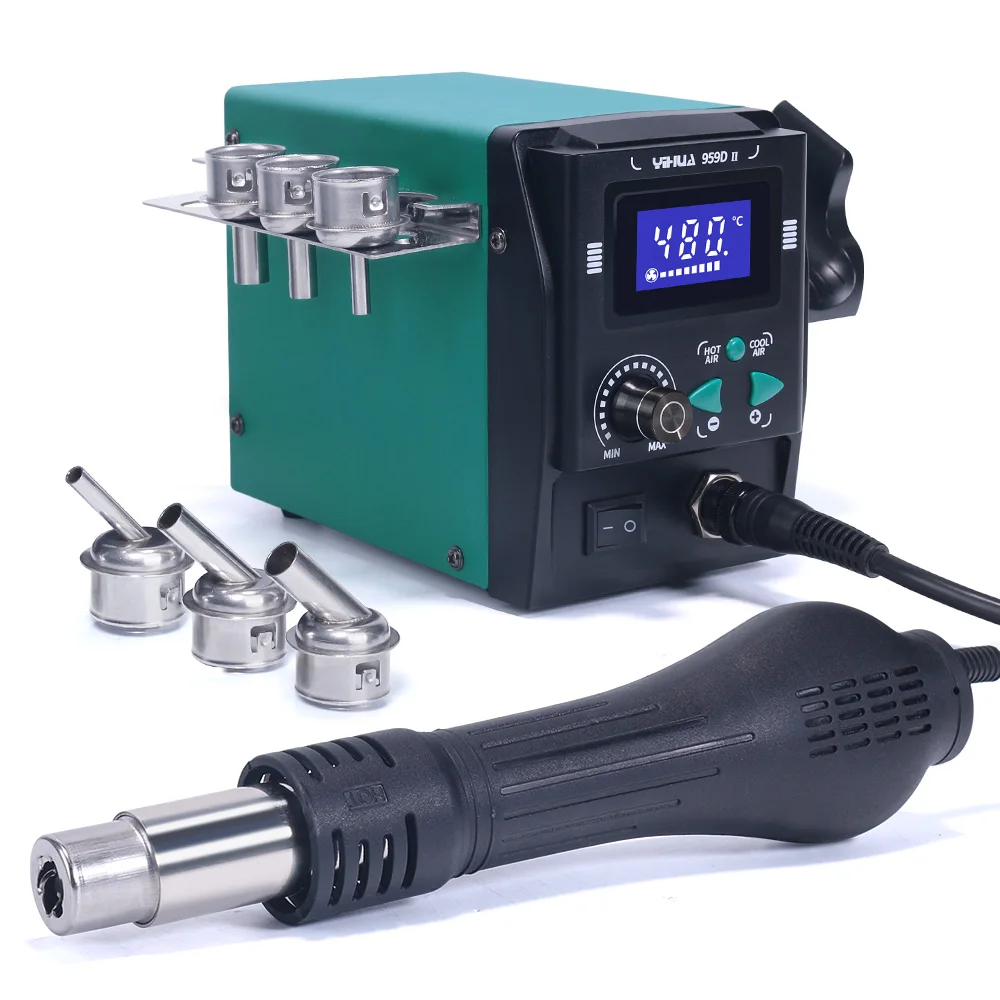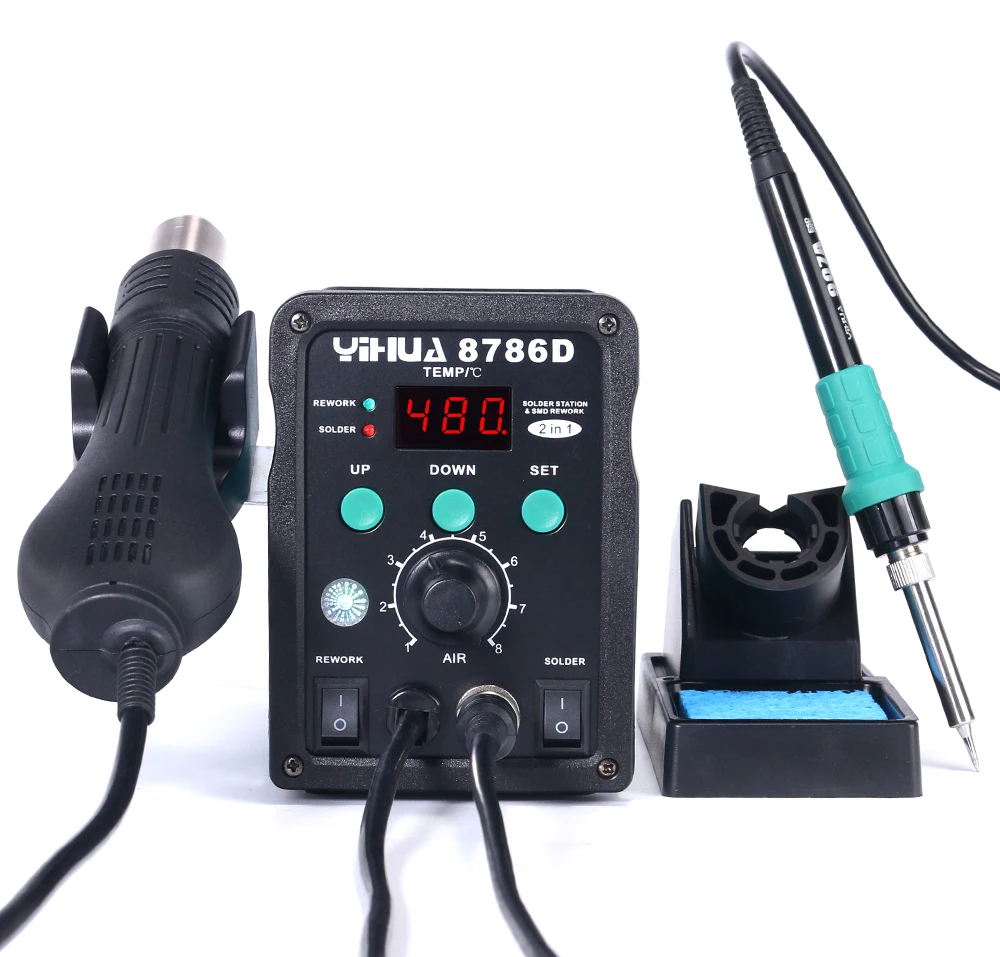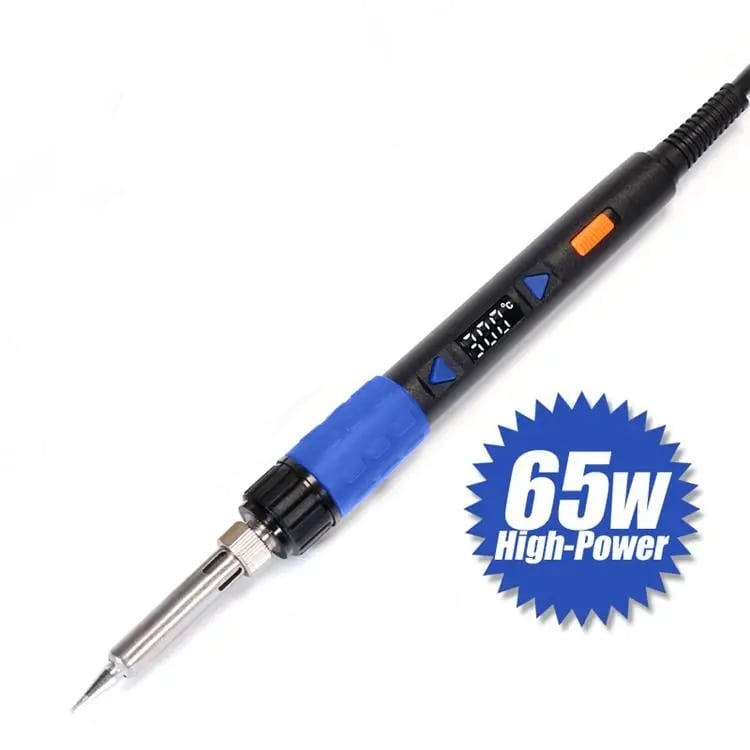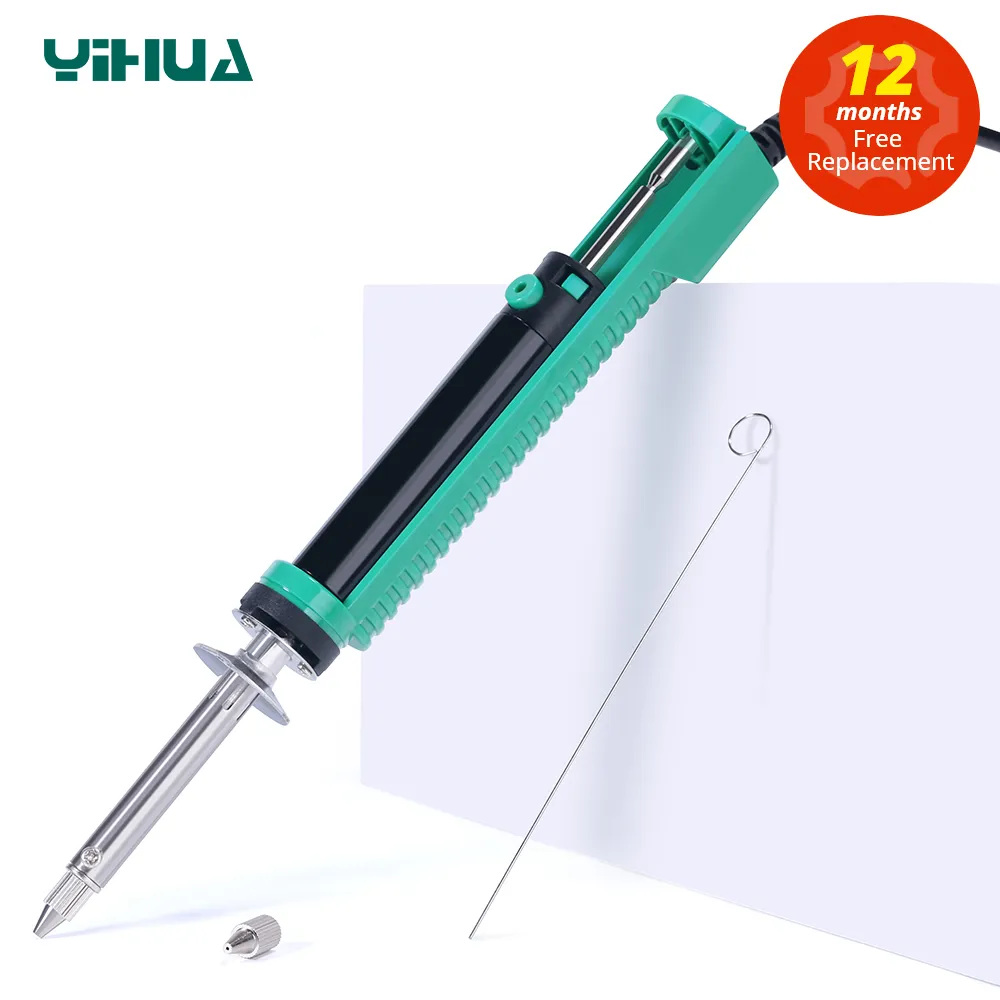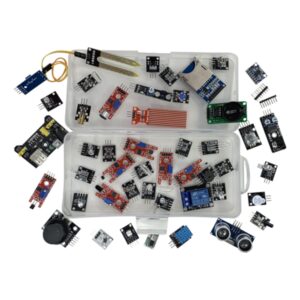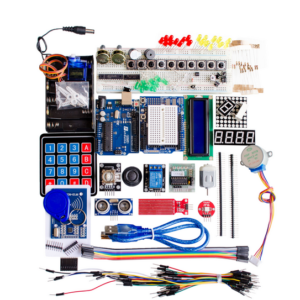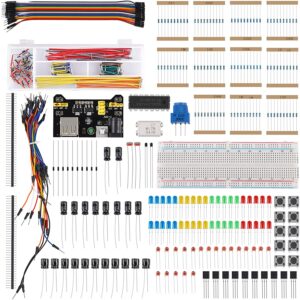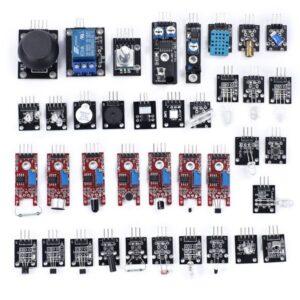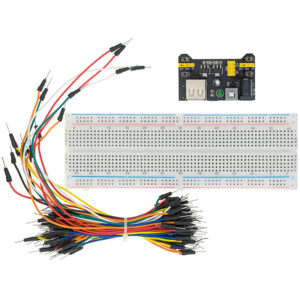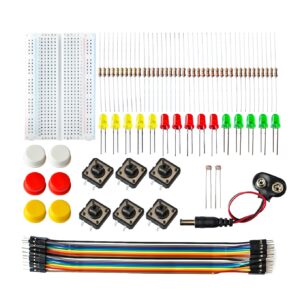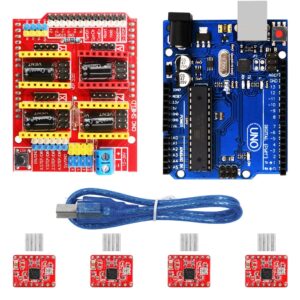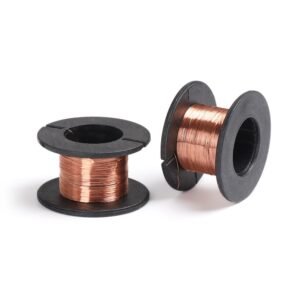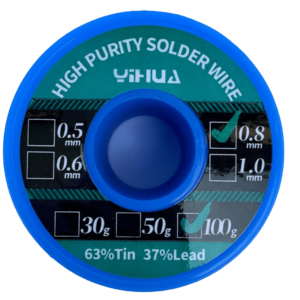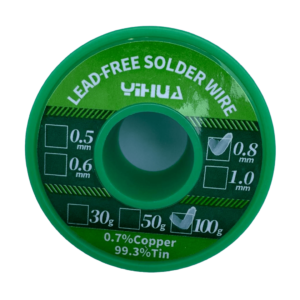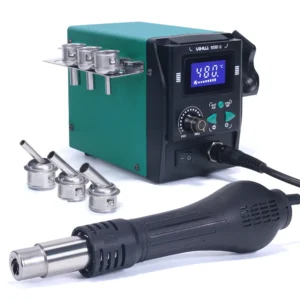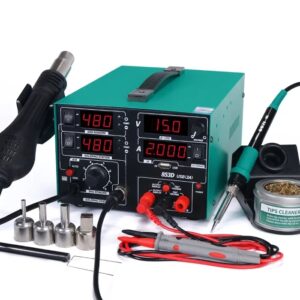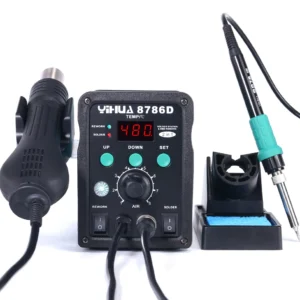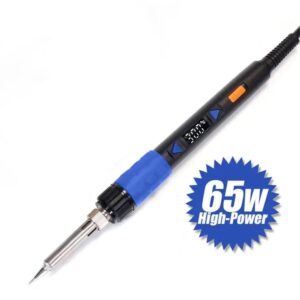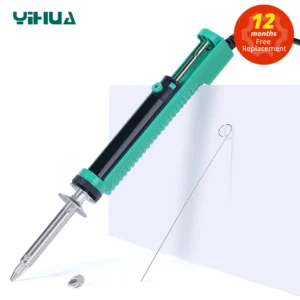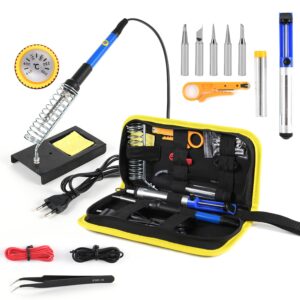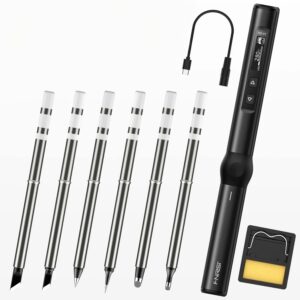Did you know a tiny 0.1% defect rate in making electronic parts could mean millions of faulty gadgets?
As electronic devices become increasingly integral to our daily lives, the importance of testing electronic components cannot be overstated. Accurate testing techniques are essential to ensure the optimal performance and reliability of electronic devices. In this comprehensive guide, we will take a deep dive into the various methods, equipment, and procedures involved in testing electronic components.
From understanding the basics of electronic component testing to identifying different types of component failures, we will cover everything you need to know to conduct effective testing. With step-by-step procedures, troubleshooting techniques, and the latest advancements in the field, you will have all the tools you need to ensure the functionality and longevity of your electronic devices.
Understanding the Basics of Electronic Component Testing
Electronic component testing is a vital aspect of ensuring the performance and reliability of electronic devices. It involves testing various components, including resistors, capacitors, inductors, and semiconductors, to determine their functionality and potential faults. In this section, we will cover the fundamentals of electronic component testing and the techniques used to test them.
Electronic components can be tested using a range of techniques, including visual inspection, continuity testing, and functional testing. Visual inspection involves examining the component for physical defects, such as cracks, burns, or bulges. Continuity testing checks for the connection between two points in a circuit, while functional testing verifies that the component performs its intended function.
The type of testing method used depends on the component being tested and the nature of the fault being investigated. For example, voltage testing measures the voltage across a component, while current testing measures the current flowing through it. Resistance testing is used to measure the resistance of a component, while capacitance testing measures the capacitance of a capacitor.
Types of Electronic Components
There are various types of electronic components, each with different characteristics and functions. Some of the most common components include:
- Resistors: resist the flow of current in a circuit
- Capacitors: store electrical charge
- Inductors: store electrical energy in a magnetic field
- Diodes: allow current to flow in only one direction
- Transistors: amplify and switch electronic signals
Component Testing Techniques
There are several techniques used to test electronic components, including:
- Visual inspection
- Continuity testing
- Functional testing
- Voltage testing
- Current testing
- Resistance testing
- Capacitance testing
- Inductance testing
- Frequency testing
Each technique has its advantages and limitations. For instance, continuity testing is a quick and simple test that checks for connectivity between two points, while functional testing provides an accurate assessment of the component’s performance under normal operating conditions.
Overall, understanding the basics of electronic component testing and the techniques involved is essential for conducting accurate and reliable testing. It ensures that electronic devices perform optimally, and faults are identified and rectified promptly.
Common Methods for Testing Electronic Components
Effective testing of electronic components requires the use of various methods to ensure optimal performance. Here are some of the most common testing methods for electronic components:
| Testing Method | Description |
|---|---|
| Voltage Testing | This method involves applying a voltage to a component to determine how it responds. It is useful in identifying issues such as short circuits and open circuits. |
| Current Testing | Current testing is used to measure the flow of electrical current in a component. This testing method is useful in identifying issues such as incorrect resistance and faulty connections. |
| Resistance Testing | Resistance testing measures the resistance of a component. It is useful in identifying issues such as defective resistors and poor connections. |
| Capacitance Testing | Capacitance testing is used to measure a component’s ability to store an electrical charge. This testing method is useful in identifying issues such as defective capacitors and short circuits. |
Other testing methods for electronic components include inductance testing, frequency testing, and functional testing, among others. It is essential to use the right testing method for the component being tested to achieve accurate results.
Inductance Testing
Inductance testing is used to measure the inductance of a component, such as an inductor or transformer. This testing method is useful in identifying issues such as open circuits and incorrect winding ratios.
Frequency Testing
Frequency testing involves measuring the frequency response of a component to an electrical signal. It is useful in identifying issues such as resonance, frequency drift, and distortion.
Functional Testing
Functional testing involves testing a component’s performance in a real-world application. This testing method is useful in identifying issues such as incorrect functioning and poor performance under certain conditions.
Overall, the use of different testing methods for electronic components is crucial in achieving accurate results and optimizing device performance. It is important to have a thorough understanding of each testing method and its appropriate usage.
Essential Equipment for Component Testing
Effective component testing requires the use of specific electronic test equipment for this purpose. From basic tools to advanced measuring instruments, having the right equipment can make all the difference in achieving accurate testing results. Here are some of the essential pieces of equipment for electronic component testing:
| Equipment | Description |
|---|---|
| Multimeter | A multimeter is a versatile instrument that measures voltage, current and resistance. It is used extensively in electronic component testing for continuity testing, resistance testing and voltage measurement. |
| Oscilloscope | An oscilloscope is an instrument used to display and measure waveform signals. It is used for component testing for analyzing signal integrity, frequency response, and timing measurement. |
| Signal Generator | A signal generator is used to produce specific signals for testing the various components. It generates waveforms such as sine, square, triangular, and pulse waveforms. |
| LCR Meter | An LCR meter measures inductance, capacitance and resistance of electronic components. It is commonly used for testing capacitors and inductors. |
| Logic Analyzer | A logic analyzer is used to observe, capture, and analyze a digital circuit’s operation. It is useful for testing digital circuits and systems. |
| Electronic Component Tester | An electronic component tester is a specialized instrument designed for testing various components such as diodes, transistors, and ICs. Electronic component testers are widely used for component testing since they can save time and simplify the testing procedure. |
Investing in quality electronic component testing equipment will help you achieve accurate and reliable testing results. Additionally, regular calibration and maintenance of the equipment will further improve the accuracy of test results.
Step-by-Step Procedures for Testing Electronic Components
Testing electronic components can seem daunting, but a systematic approach can ensure accurate and reliable results. Follow these step-by-step procedures to test various types of electronic components:
1. Semiconductors
Note: Prior to testing semiconductors, make sure to discharge any capacitors connected to the device.
- Use a multimeter to test the diode/continuity of the semiconductor. The forward voltage drop should be around 0.6 to 0.7 volts for a silicon diode and 0.2 to 0.3 volts for a germanium diode. If the voltage drop is much lower, the diode is likely shorted. If the voltage drop is much higher, the diode is open.
- Test the voltage gain of the transistor by using a multimeter set to the hFE (DC current gain) setting. Connect the multimeter probes to the base and collector pins of the transistor, then vary the voltage of the base pin to read the current gain on the multimeter. A typical value for a standard bipolar transistor is around 100.
- Check the resistance of the semiconductor by using a multimeter set to the ohms setting. Connect the multimeter probes to the collector and emitter pins of the transistor and read the resistance on the multimeter. A zero or very low resistance reading indicates a shorted transistor.
2. Resistors
Note: Prior to testing resistors, disconnect one lead from the circuit.
- Use a multimeter set to the ohms setting to test the resistance of the resistor. Place the multimeter probes on each end of the resistor and read the resistance value on the multimeter. If the value is within tolerance, the resistor is functioning correctly. If not, it may need to be replaced.
- Check for resistance drift by using an LCR meter. Record the resistance value and then gradually reduce or increase the temperature of the resistor. If the resistance changes significantly, it may be a sign of a faulty resistor.
3. Capacitors
Note: Prior to testing capacitors, discharge them using an appropriate resistor or discharge tool.
- Check the capacitance value of the capacitor by using a capacitance meter. Connect the capacitance meter to the capacitor and read the capacitance value on the meter. If the value is within tolerance, the capacitor is functioning correctly.
- Test the ESR (Equivalent Series Resistance) of the capacitor with an ESR meter. A high ESR reading indicates a faulty capacitor.
- Use an oscilloscope to test the capacitor’s frequency response by applying an AC voltage across the capacitor and measuring the output waveform. A poor response may indicate a faulty capacitor.
4. Inductors
Note: Prior to testing inductors, disconnect one lead from the circuit.
- Use an LCR meter to measure the inductor’s inductance value. Connect the LCR meter to the inductor and read the inductance value on the meter. If the value is within tolerance, the inductor is functioning correctly.
- Check for any shorted turns by using an ohmmeter. Place the multimeter probes on each end of the inductor and read the resistance value on the multimeter. A zero or very low resistance reading indicates a shorted inductor.
Following these procedures will help ensure accurate and reliable testing of electronic components.
Special Considerations for Electrical Component Testing
Testing electrical components requires specific considerations to ensure safety and accuracy. These are particularly important when dealing with high-voltage components or sensitive electronic devices. Here are some key factors to keep in mind:
- Always wear appropriate protective gear: When working with high-voltage equipment, it is essential to wear gloves, safety glasses, and other protective gear to prevent electrocution or injury. Make sure to use grounded tools and equipment to reduce the risk of shock or injury.
- Handle components with care: Many electronic components are sensitive to static electricity, which can cause damage or failure. Always handle components carefully and touch a grounded metal surface before touching them to discharge any static electricity. When handling sensitive components, use anti-static bags or wrist straps to prevent damage.
- Use appropriate testing methods: Testing high-voltage components requires specialized equipment and techniques to ensure safe and accurate results. Make sure to use the appropriate testing techniques for the component you are working with, and follow the manufacturer’s instructions carefully.
- Ensure proper grounding: When testing high-voltage components, it is essential to ensure proper grounding to prevent electrical interference or damage to the equipment. Use a grounding strap or connect the component to a grounded metal surface to ensure proper grounding.
By following these guidelines, you can ensure safe and effective testing of electrical components, reducing the risk of injury or damage to the equipment. Always consult a qualified technician or engineer if you are unsure about the proper procedures for testing high-voltage components or sensitive electronic devices.
Types of Electronic Component Failures
Accurate electronic component testing is crucial for identifying and resolving issues with electronic devices. Understanding the different types of electronic component failures is essential for effective testing. Here are some of the most common types of failures:
| Failure Type | Description |
|---|---|
| Open circuits | When a circuit fails to conduct current due to a broken or disconnected wire. |
| Short circuits | When a circuit conducts more current than it is designed to handle, causing overheating and damage. |
| Component degradation | When a component deteriorates over time due to environmental factors, such as heat or moisture, or due to wear and tear. |
| Faulty connections | When a component’s connections become loose or corroded, affecting its ability to function correctly. |
Identifying the type of failure is crucial for determining the appropriate testing method and troubleshooting strategy. For example, an open circuit can be identified through continuity testing, while component degradation may require more complex testing methods, such as capacitance or resistance testing.
Proper documentation of the failure type and the testing methods used is essential for quality control purposes and for future reference, particularly in complex systems where multiple components may be interconnected.
Troubleshooting Techniques for Component Testing
Electronic component testing can be a daunting task, especially when faced with unexpected issues and problems, but troubleshooting these issues is a crucial aspect of ensuring accurate testing results. Here are some effective component testing techniques to help you troubleshoot any problems that may arise.
1. Double-Check Your Connections
One of the most common causes of testing errors is a faulty connection between the component and the testing equipment. Make sure that all your connections are secure and that you are using the correct leads and probes for the specific type of component you are testing.
If you are testing a circuit board, check that all the components are correctly seated and that there are no loose connections or damaged traces.
2. Test Your Testing Equipment
It may seem counterintuitive, but one of the best ways to troubleshoot testing errors is to test your testing equipment. Make sure that your multimeter, oscilloscope, or other testing equipment is functioning correctly and providing accurate readings.
Use a known good component to check that your testing equipment is providing consistent and accurate readings.
3. Check for Interference
Electronic component testing can be affected by external sources of interference, such as electromagnetic fields and radio-frequency signals. Make sure that you are testing in an environment that is free from interference and that your testing equipment is shielded from any external signals.
4. Check the Component Under Load
Some components, such as transistors and diodes, can exhibit different characteristics when under load than when tested without a load. Make sure that you are testing the component under the correct load conditions and that you are using the correct testing techniques for the specific type of component you are testing.
5. Use Your Senses
Sometimes, the most effective way to troubleshoot testing errors is to use your senses. Look for any visible signs of damage or wear on the component or circuit board, such as burn marks or cracks.
Use your sense of smell to detect any unusual odours, which could indicate a component failure or overheating.
These troubleshooting techniques can help you identify and resolve any issues that may arise during electronic component testing, ensuring accurate results and optimal performance of electronic devices.
Importance of Documentation in Component Testing
Proper documentation is a critical aspect of electronic component testing. Accurate and detailed records of testing procedures and results ensure traceability, quality control, and compliance with regulatory standards. Documentation also serves as a valuable reference for future testing and maintenance, enabling technicians to identify potential issues and make informed decisions about repairs or replacements.
During testing, all results should be recorded, including any anomalies or abnormalities. This information should be entered into a test log, which provides a chronological record of all testing activities. The log should include details such as the date and time of the test, the equipment used, and the test methodology. This documentation helps identify specific components that require further investigation or may need to be replaced.
Creating comprehensive test reports is another crucial aspect of documentation in component testing. A test report details all testing activities and results, providing a comprehensive overview of the component’s performance. This report should include a summary of the test methods used, the test results, and any recommendations for future testing or maintenance.
Effective documentation practices ensure compliance with industry standards and regulations, such as ISO 9001 or AS9100, which require detailed records of testing procedures and results. It also helps in identifying trends over time, such as recurring issues or component failures, enabling technicians to take corrective action proactively.
In summary, proper documentation is a fundamental aspect of electronic component testing, enabling technicians to accurately record test results and maintain traceability. Effective documentation practices provide a valuable reference for future testing and maintenance activities, ensuring optimal performance and reliability of electronic devices.
Latest Advancements in Electronic Component Testing
As technology continues to evolve, so do the methods and equipment used in electronic component testing. In recent years, there have been significant advancements in testing techniques, equipment functionality, and software capabilities. These advancements have made testing more accurate, efficient, and cost-effective, resulting in improved product quality and reduced development time.
Emerging Technologies
One of the most significant advancements in electronic component testing is the use of emerging technologies such as artificial intelligence (AI) and machine learning. These technologies enable automated testing processes and real-time analysis of test results, reducing human error and increasing testing speed.
Another emerging technology is the use of microfabrication processes to develop microelectromechanical systems (MEMS) sensors. These sensors are small, highly sensitive, and can measure a wide range of physical and chemical properties, making them ideal for testing electronic components in challenging environments.
Innovative Testing Methods
Advancements in testing methods have also contributed to improved electronic component testing. For example, non-destructive testing methods such as X-ray and acoustic microscopy have become more widely used in recent years. These methods allow internal structures of components to be inspected without damaging them, providing a more accurate picture of their quality and performance.
Another innovative testing method is the use of environmental stress screening (ESS) to simulate harsh environments and identify potential component failures. This method involves exposing components to high temperatures, humidity, and vibration to accelerate the aging process and detect potential failures before they occur.
Advancements in Testing Equipment
The development of advanced testing equipment has significantly improved the accuracy and efficiency of electronic component testing. For example, the introduction of automated test equipment (ATE) systems has revolutionized testing processes by enabling the parallel testing of multiple components simultaneously.
Furthermore, advancements in oscilloscopes have enabled the measurement of high-frequency signals with greater accuracy, allowing for more precise testing of a wider range of components. Additionally, the availability of portable testing equipment has made it easier to perform testing in the field or in remote locations.
Conclusion
The latest advancements in electronic component testing have significantly improved the accuracy, efficiency, and cost-effectiveness of testing processes. Emerging technologies like AI and machine learning, innovative testing methods such as non-destructive and ESS testing, and advancements in testing equipment all contribute to improved product quality and reduced development time. As technology continues to evolve, electronic component testing will undoubtedly continue to advance, resulting in even more precise and reliable testing methods.
Conclusion
Electronic component testing is crucial for ensuring the optimal performance of electronic devices. As we’ve seen throughout this article, accurate testing techniques are necessary to identify potential issues and ensure the reliability and functionality of electronic components.
Understanding the basics of electronic component testing, including the different types of components and testing techniques, is essential. By utilizing common methods such as voltage, current, resistance, and capacitance testing, and having the necessary equipment such as multimeters, oscilloscopes, and signal generators, accurate testing can be performed.
Step-by-step procedures for testing different types of components, including semiconductors, resistors, capacitors, and inductors, can help ensure thorough and systematic testing. However, there are also special considerations to be taken into account when handling electrical components, including safety precautions and handling sensitive components.
Identifying the common types of electronic component failures, such as open circuits, short circuits, and faulty connections, is important to ensure accurate testing results. And, when issues arise, effective troubleshooting techniques can help quickly identify and resolve problems.
Proper documentation is also crucial during electronic component testing. Recording test results, maintaining test logs, and creating comprehensive test reports for future reference and quality control purposes can help ensure the reliability and functionality of electronic devices.
Finally, it’s important to keep up with the latest advancements in electronic component testing. Emerging technologies and innovative testing methods, along with advancements in testing equipment, can help improve accuracy and efficiency, and ensure optimal performance of electronic devices.
Stay Ahead with Accurate Electronic Component Testing
As technology continues to evolve, electronic component testing will only become more critical. By following the techniques and methods outlined in this article, you can stay ahead of the curve and ensure the reliability and functionality of electronic devices by accurately testing electronic components.


